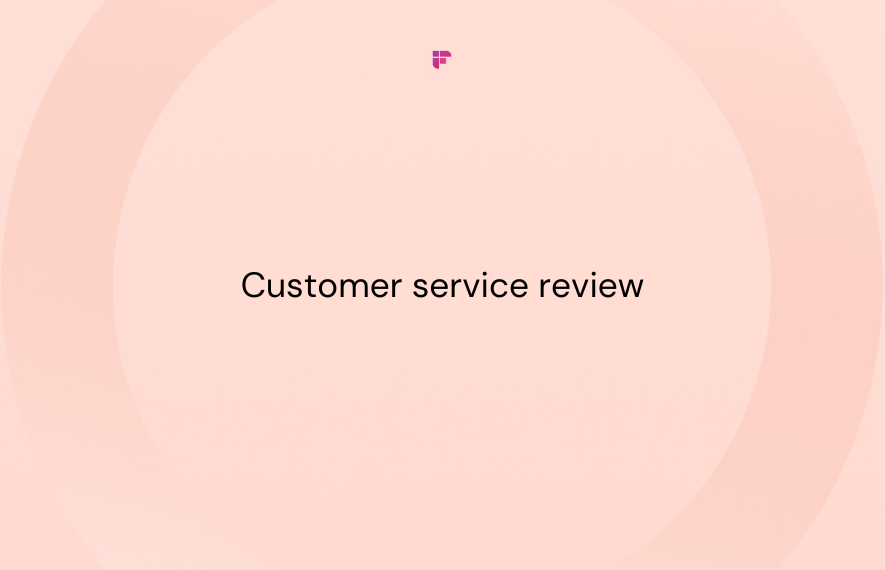Churn is the archnemesis of any SaaS business and is one of the most widely discussed metrics in the subscription industry. Because while the booming, exciting world of SaaS is aiding the creation of new ways to interact with customers, it is also making one thing very clear -
The struggle to generate new demand for a business is real, but so is the struggle to keep the existing customers around.
In the modern marketplace, the consumer holds all the power. All it takes is an unsatisfied customer clicking ‘cancel service’, and you disappear again into the array of software solutions.
The conversation around customer churn is exactly about that - How do you stop your existing customers from walking away, or make them fall in love ( a ‘breezy commitment, if you may) with your product.
As the old adage goes: You can’t manage what you don’t measure, and in times like ours, the business metrics that provide the most actionable data are those that measure performance at the customer level.
Reducing churn is a serious undertaking and one that’s definitely worth prioritizing. According to research from Bain & Company, a 5% increase in customer retention can increase profits by 25% - 95%
Through Customer Success, SaaS companies are able to retain a higher number of customers that they would otherwise lose. In fact, reducing churn is the number one priority for SaaS companies that have Customer Success Programs in place.
What is Customer Churn?
Depending upon whom you ask, you might get different answers to that question. But at its core, a company’s customer churn rate represents the speed at which its customers are leaving.
In other words- how quickly are your customers clicking that cancel button.
Investopedia defines churn rate as: “The percentage of subscribers to a service that discontinues their subscription to that service in a given time period.”
Under that basic definition, a business could calculate its churn rate by dividing the number of customers lost over a given period by the number of customers it had at the onset of that time period. The mathematical equation would look something like this:
(Number of Customers Lost) ÷ (Original Number of Customers)
How Customer Success helps Reduce Churn
Several recent trends indicate that we’re at the beginning of a new era—call it customer success 2.0—in which many companies are focusing on growth in addition to churn.
If you want to prevent customer churn, you need a top-notch retention strategy. A sure-shot way to ensure you’re on the right path is to think about customer success.
Reducing churn is essential for subscription businesses. As the SaaS economy evolves, it’s common knowledge that customer success drives growth.
This idea comes from the fact that If you are a recurring revenue business, most of your revenue comes after the initial sale.
According to McKinsey, once your customers are happy, they will also be willing to upgrade (upsell) their existing packages with you, and might also bring in more revenue for your company through word of mouth, or even referrals.
Some companies would say that engaged customers equals happy customers. But that’s not always true. Customers can continue using your product even if they’re not optimally happy with it. Then one day, when they’ve had enough, they leave.
That being said, customer churn often comes as a surprise to businesses. Implementing customer success strategies helps you prevent that. CS strategies to reduce churn help you learn that a customer is unhappy with your product before they make a decision to leave.
How to Use Customer Success to Reduce Churn
1. Care About Your Best Customers Before They Reach The Edge
A lot of businesses feel reducing churn means finding a pool of customers that seem most likely to leave and then refocusing energy and resources to bring them back from the edge. However, you should be thinking of keeping them from walking to the edge, and an effective CS strategy can help you do that.
Instead of redirecting time and resources to retaining any customers that stand on the edge of churn, businesses should also consider focusing on the most profitable customers to prevent any potential dissatisfactions.
2. Don’t Meet Your Customers Halfway. Walk All The Way Through
Proactive communication goes beyond responding to a query fast. It also includes reaching out to your customers before they need you. By doing that, you demonstrate that you’re invested in making their experience with your product better, and want to ensure that they get the most out of your service.
While it sounds simple, the key is personalization. The type of message or resource you send to them should be directly tied to their product or service usage.
For example, if someone signs up for your product or service and you notice that they aren't leveraging all of what's available to them, you might send them a friendly nudge.
Here’s an example from an emaile-mail I got from Fireflies.ai when I was trying to integrate it with something I didn’t have much clue about:
Fireflies.ai realized what I was trying to do, and sent me an email with guided steps to achieve what I wanted to.
3. Use Advanced Analytics To Understand Customer Behavior & Streamline Your Offerings
Best-in-class teams apply advanced analytics to their repositories of rich data to predict customer behavior. Because the pace of innovation is quickening, leading players are those who deploy advanced analytical techniques across even richer data.
Along with predicting churn, advanced analytics can help you identify products and services that might accelerate value capture. In today’s CS analytics market, companies also use advanced analytics to determine which teams should undertake specific activities at different points along the customer journey.
For example, one could use data-based triggers to identify when to engage with customers by offering helpful services, such as a custom training program or diagnostics.
Here’s an example from an audio/video editing app, Descript’s daily pop-ups that I receive on opening the app on my desktop (also something I chose to receive):
4. Take Customer Onboarding Seriously, And Show Help Before It’s Asked For
Getting started with a new product or service can be overwhelming. And if a customer can't figure out how to navigate your product or service easily, they'll likely lose interest -- fast.
A great way to ease the transition is to set up a customer onboarding process or roadmap to guide new customers through your product’s features, functionality, and process.
Not only does that make it easier to manage customer expectations, but also gives you complete control over the pace at which you deliver information, and thus, experience to them.
Customers that feel that their experience with the brand matters, are less likely to leave. That’s why it is also important to constantly monitor and iterate on your onboarding process, keeping an eye out for snags.
Here’s an example of onboarding emails I received from Loom:
5. Offer Timely Incentives
Offering your loyal customers something special is not only a good way to give them a reason to stick around but also to help them build greater trust in your service.
This doesn’t need to be a ripping discount or an exceptional offer. A promo, discount, loyalty program, etc, can generally help you create a pace.
While you might think “Pf I know that”, the important lesson to drive home is - what metric are you using for determining when to surface these initiatives? Here are a few things to consider:
- Think about the customer's timeline: If they are very close to the end of their contract and you're worried they might not renew, providing a discounted renewal rate could be the push they need to stick around.
- Consider customer's needs: If you predict that a customer is going to cancel after realizing that your product or service isn't what they were looking for, incentivize them to stay onboard while you work on building a feature or strategy that will help them accomplish their goals.
6. Take Feedback Early, & Often
Customer churn is often the result of customer frustration. More than often, it starts with confusion around the feature of the product or service or lack of effective support around a particular issue.
While that thought is a good place to start, those concepts can seem vague. Getting to the root of the specific issue that’s creating patches of rust in your business requires you to take feedback early and often.
For example, depending on your business needs, creating a customer feedback loop can be as easy as setting up a survey or feedback form and sending an email.
7. Analyze Churn When It Happens To Understand Its Behavior For Better Predictability
Don’t wait to fix the churn until it happens. Waiting for a customer to leave is already a lot of time wasted. Instead, you should be thinking about using data before customer churn, so you can build strategies to proactively prevent it.
A good way to begin is to find out when your customers are most likely to cancel your services. Here are a few questions to consider:
- How long after a customer starts using your product are they most likely to churn?
- Does churn happen if customers go a specific number of days without using the product or service?
- What’s your communication history with a typical churning customer?
- Are customers leaving for specific reasons?
- What are their objections that led them to cancel or stop purchasing?
Once you have answers to these questions, you can start putting the trends together so you can forecast churn before it happens, and reach out to at-risk customers with tailored incentives and offers to re-engage them.
Last Two Cents
No matter how much effort you put into the steps above, churn is a part of any business, and it will happen.
The key is to use your churned customers (and your happy customers) to predict key signs of customer happiness and customer dissatisfaction so you can engage with your customers better and decrease the churn rate.
Have unique ideas for preventing churn using customer success? Tell us in the comments below.







